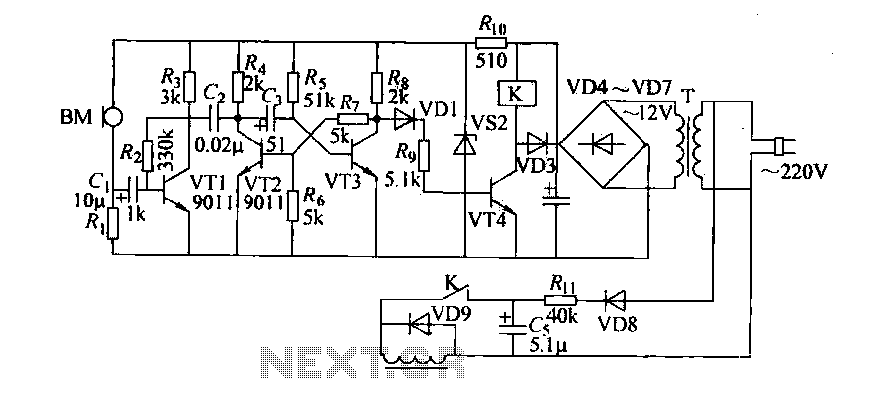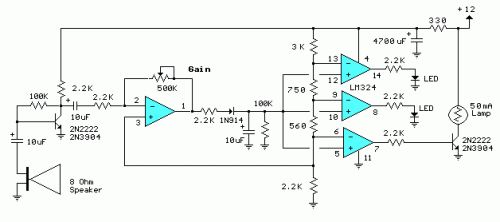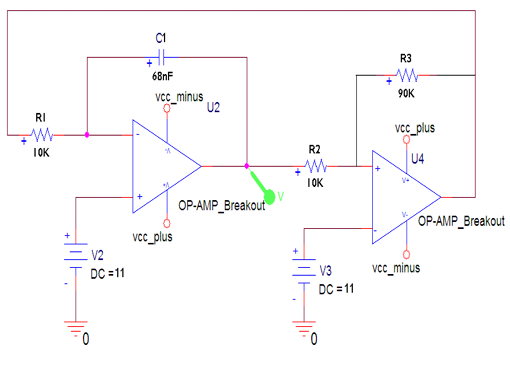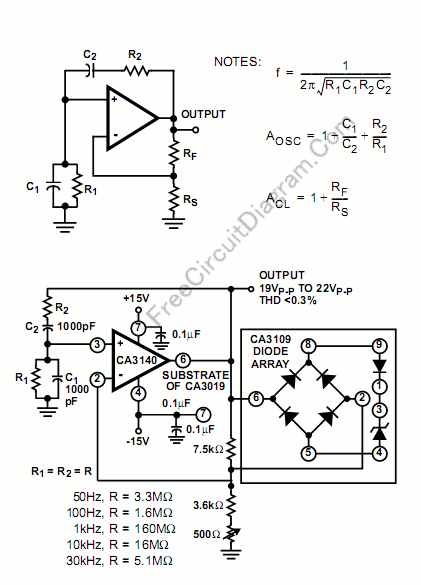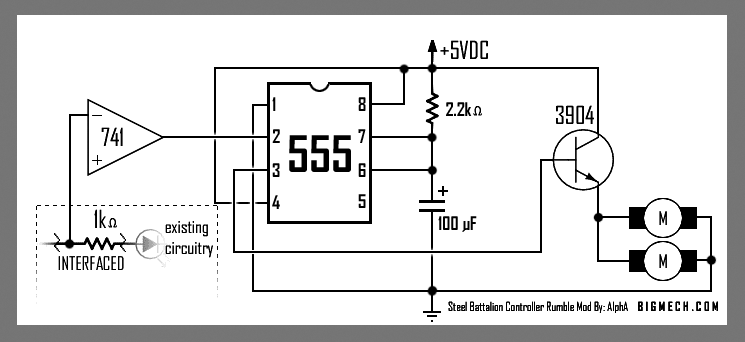
Servo Motor Controller Circuit

This is a simple basic design of a servo motor controller with a pulse generator. It utilizes the CMOS IC 7555 in astable mode to generate pulses for driving the motor.
The servo motor controller circuit employs the CMOS IC 7555 configured in astable mode to produce a continuous square wave output. This output serves as a pulse signal that is crucial for controlling the position and movement of the servo motor. The frequency and duty cycle of the generated pulses can be adjusted by changing the resistor and capacitor values connected to the 7555 IC.
In astable mode, the 7555 operates without any stable state, constantly switching between high and low outputs. The timing components, typically a combination of resistors (R1, R2) and a capacitor (C), define the frequency (f) of the output waveform. The frequency can be calculated using the formula:
\[ f = \frac{1.44}{(R1 + 2R2) \cdot C} \]
The duty cycle, which determines the proportion of time the output is high versus low, is influenced by the resistor values, allowing for fine-tuning of the pulse width. This is critical for matching the requirements of the specific servo motor being controlled.
The output of the 7555 is connected to the control input of the servo motor, which interprets the pulse width to adjust its position accordingly. Additionally, the circuit may include a power supply section to provide the necessary voltage levels for the IC and the servo motor, ensuring reliable operation.
Overall, this simple servo motor controller design is effective for applications requiring precise control of motor position, such as in robotics, automation systems, and remote-controlled devices.This is the simple basic design of servo motor controller with pulse generator. It uses the CMOS IC 7555 in the Astable mode to generate pulses to drive th.. 🔗 External reference
The servo motor controller circuit employs the CMOS IC 7555 configured in astable mode to produce a continuous square wave output. This output serves as a pulse signal that is crucial for controlling the position and movement of the servo motor. The frequency and duty cycle of the generated pulses can be adjusted by changing the resistor and capacitor values connected to the 7555 IC.
In astable mode, the 7555 operates without any stable state, constantly switching between high and low outputs. The timing components, typically a combination of resistors (R1, R2) and a capacitor (C), define the frequency (f) of the output waveform. The frequency can be calculated using the formula:
\[ f = \frac{1.44}{(R1 + 2R2) \cdot C} \]
The duty cycle, which determines the proportion of time the output is high versus low, is influenced by the resistor values, allowing for fine-tuning of the pulse width. This is critical for matching the requirements of the specific servo motor being controlled.
The output of the 7555 is connected to the control input of the servo motor, which interprets the pulse width to adjust its position accordingly. Additionally, the circuit may include a power supply section to provide the necessary voltage levels for the IC and the servo motor, ensuring reliable operation.
Overall, this simple servo motor controller design is effective for applications requiring precise control of motor position, such as in robotics, automation systems, and remote-controlled devices.This is the simple basic design of servo motor controller with pulse generator. It uses the CMOS IC 7555 in the Astable mode to generate pulses to drive th.. 🔗 External reference
Warning: include(partials/cookie-banner.php): Failed to open stream: Permission denied in /var/www/html/nextgr/view-circuit.php on line 713
Warning: include(): Failed opening 'partials/cookie-banner.php' for inclusion (include_path='.:/usr/share/php') in /var/www/html/nextgr/view-circuit.php on line 713
